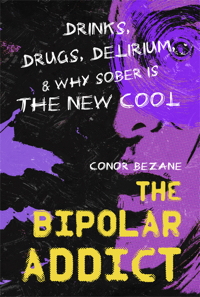The Colorado Shootings: Guns, Not Movies To Blame
The suspected gunman in Aurora, Colorado, James Holmes, inevitably had an unhealthy obsession with the ultraviolent Batman films. He dyed his hair red and told police “I am The Joker.” He had a Batman poster and mask in his apartment.
Did he read comics? An ABC report speculates that the shooter may have mimicked a scene in the comic book series The Dark Knight Returns. In the 1986 comic book, The Joker murders an audience in a TV studio with “smile gas.” Of course, the gunman in Aurora used tear gas at the beginning of the massacre in the movie theater.
I’m surprised parents and the media are not blaming pop culture for the shootings. They certainly did in 1999, when Eric Harris and Dylan Klebold opened fire on Columbine High School in Littleton, CO, killing 12 classmates and a teacher and injuring 21.
Back then, like now, everyone was looking for a scapegoat — a reason why something like this could’ve happened. Now, in the wake of the Aurora tragedy — which happened just a 20-minute drive from Littleton — we are having a conversation about guns, not pop culture. We finally got it right.
In the case of Columbine, parents blamed the music Harris and Klebold liked — “shock-rocker” Marilyn Manson and German industrial band KMFDM. It was widely reported that the two also liked to play blood-and-guts video games like the now-old-school first-person-shooter Doom. They would watch violent movies like The Matrix and Natural Born Killers as well.
I visited Littleton with MTV News correspondent Gideon Yago in 2004 – five years after the massacre there. We went there to grab some local flavor, taking the temperature of the town and meeting some Columbine students from the first class that was not around during the shooting. Was bullying still prevalent? Yes – according to the skaters, punks and goth kids we met at the skate park near the school. No, according to the jocks and cheerleaders. “We all get along,” they said.
As a lowly associate producer, my job was to find these students in advance so that we could have a plan to interview them when we got there. This was long before Facebook and Twitter. If those tools were around it would’ve been easy to find kids, but they weren’t so I actually found some on the then-popular blogging community LiveJournal.
The video I cut is not on the Internet – there are copyright issues with the music I used – but I still have the tape on Beta SP, a format which is a dinosaur of the television industry. Maybe someday I will transfer these tapes to digital for all to see. However, a text interview with survivor Richard Castaldo is still posted on MTVNews.com.
My piece examined the effects the massacre had on pop culture and the movies, TV shows and music that were influenced by the tragedy.
For example, a Deftones music video called “Back to School” shined a spotlight on bullying and celebrated the punks and goth kids who feel like they are “different.” In the video, they are the cool kids, not the jocks and cheerleaders who traditionally hold the title of “leaders” of the school.
And of course there was the 2002 documentary Bowling for Columbine – Michael Moore’s poignant examination of gun culture in America. His was one of the few loud voices that took a stand against the real problem — guns.
I absolutely hate guns. I’m proud of the fact that I’ve never even touched one. And I think it is more dangerous to own one than it is to be gun-free.
I was never allowed to play with G.I. Joes as a kid. My dad wouldn’t allow it. I’m glad he didn’t. I was allowed to play with cartoonish ones like squirt guns, but anything that resembled the real thing was off limits.
After another horrible tragedy, the Republicans will once again find a way to defend the right to bear arms while still criticizing the violence. Rep. Louie Gohmert (R-TX) went as far as to say that people in the theater should’ve been allowed to carry concealed weapons and intervene with their own guns. That would’ve made the situation even more dangerous.
The NRA’s unofficial slogan is famously “Guns don’t kill people, people kill people.” That is utterly false when you consider the type of guns that are legal in the US. Hunting rifles and handguns are perfectly acceptable in my view. But no one needs an assault rifle with a high-capacity magazine to shoot deer. The weapons of war the shooter purchased were perfectly legal. And this is sad.
Ultimately, with this new shooting, we as a country are finding the real scapegoat. It is not pop culture. It is our gun culture. However, guns aren’t the only problem. The elephant in the room is mental health.
After all, it is easier and cheaper to buy a gun in this country than it is to afford quality mental health care. I am not defending the shooter. Mental illness is no excuse, but we need to have a serious discussion about mental health — not just guns.








